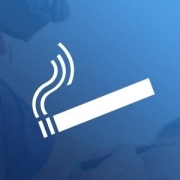Bleeding After Hair Transplant
After hair transplant, there may be minimal bleeding from the donor and hair transplanted area. Medications, alcohol and other blood thinners used by the patient before transplant can increase the risk of this bleeding. In the Donor area, Bleeding after Hair Transplant is seen more in the FUT method. After the bleeding of the dressing area, the area where the newly planted hair follicles are left open after the hair transplant operation, and the donor area that is taken from the hair follicle is closed by dressing. After hair transplantation, the donor area closed with a bandage may also occasionally have light bleeding transplant. Especially in the FUE method, it is not possible to have serious bleeding in the bandaged area that has been bandaged. This area also takes 4 days for wounds to heal.
Is bleeding normal after hair transplant?
Hair transplantation is a medical operation, and it is very normal to experience bleeding during the procedure. But after surgery, serious bleeding is usually not seen. The development of bleeding after hair transplant depends on the patient’s blood flow rate and blood fineness. If the patient has a blood clotting problem, this condition should be evaluated before the operation. If the patient is taking blood thinners, this drug should be decamped for 1 week before and after the operation. As a result, small bleeding after hair transplantation is considered normal. In this type of normal bleeding, the blood should not be erased. Pressure should not be applied to the scalp to stop the blood. Such movements can damage the grafts. If the bleeding has reached serious dimensions, the condition should be reported to the hair transplant specialist as soon as possible.
How long will be bleeding after hair transplant?
After hair transplant, bleeding may continue for a few days. Do not panic. On the first day, a person who leaves the hospital with a bandage in the nape area does not feel much pain due to the ongoing effect of local anesthesia, while after a certain period of time they may experience mild pressures that we call throbbing in the nape area, painkillers prescribed by the doctor to avoid this condition can be regularly drunk not only when there is pain, but also as often as recommended by your doctor. Regular use of painkillers, especially during the first 3 days, prevents pain that may occur after hair transplant.
How reduce bleeding after hair transplant?
Decongestant side effects of hair transplant include bleeding. This side effect, which occurs according to the rate of blood clotting of a person, can cause intense scabbing of the hair follicles after surgery. After hair transplant, crusts can be seen. A person’s bleeding and blood clotting rate should be checked before surgery. If necessary, the person should be given blood thinners or blood coagulants to remain at a normal level. Since the interventions in the transplantation area during hair transplantation operations cause slight bleeding and incision fluids, these fluids crust over a few days after transplantation. This process, which appears as crusting after hair transplantation, is not a cause for concern as it occurs due to healing. The crusts, which disappear easily with the lotion washing process repeated every day for about 15 days, should never be removed during this period. A wrong move can cause the roots to dislodge. For this reason, it is very important for hair health to be careful until the crusts completely pass through the hair follicles. Crusting after hair transplantation, which is seen in everyone who has had hair transplantation without exception, is a normal process of transplantation operations and does not pose any problem if it is handled carefully.
How do you get rid of dry blood after a hair transplant?
It is typical to experience dry blood in the scalp following a hair transplant for 7-10 days, after which there should be no more traces of dried blood or scabs on your head. So, at that point, you can begin washing your hair normally.
However, having dry blood during the first two weeks would be a problem because you will be unable to wash your head. So, to get rid of the dried blood, use the creams and lotions recommended by your surgeon to soften the scalp. You can carefully remove the dry blood once it has softened.
References:
https://www.hairlossdoctors.com/blog/2013/11/20/reducing-bleeding-after-hair-transplant-136440







